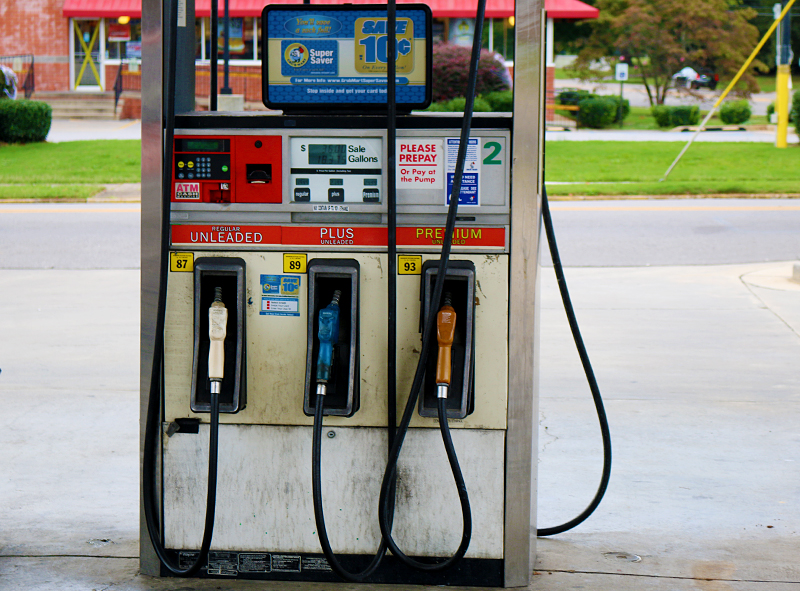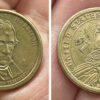Note: This article pertaining to Reader Question: Why Do Fuel Prices End in 9/10 of a Cent in the United States? was originally published on Friday, November 29, 2019 at 8:32 in the morning and has been updated.
“In America they wouldn’t need to change prices if the cent were eliminated because even now, prices can be charged that cannot possibly be paid, at least for gas. 1 gallon of gas always costs an amount that ends in 9/10 of a cent. Why? Either make it 9 cents or round it to to the next penny. Yes I know, it’s psychological trickery but since gas prices change all the time, I think that trickery is no longer effective.”
Reader Question: Why Do Fuel Prices End in 9/10 of a Cent in the United States?
That question you just read was posted by Barry Graham — who is a reader of The Gate With Brian Cohen — as this comment to this article titled Does Eliminating the Penny Make Cents? Why do fuel prices always end with 9/10 of a cent? That seems rather ridiculous — right?!? Why not just round up the price another one-tenth of one cent and call it even?
“We have to go way back to when the oil companies were selling gas for, let’s say, 15 cents, and then the state and federal boards decided they wanted a piece of that to keep the roads going, so they added 3/10 of a cent. And the oil companies said, ‘Well, we’re not going to eat that,’ so they passed that on to the public”, according to this article written by Tommy Andres for Marketplace of Minnesota Public Radio. “They found out that if you priced your gas 1/10 of a cent below a break point, let’s say 40 cents a gallon, ‘.399’ just looked to the public like 39 cents…”
This article — which was written by
The United States Congress first implemented a $0.01 gas tax in 1932 as a temporary measure, putting that money towards reducing deficits acquired due to the Great Depression. The tax was supposed to expire in 1934, but, as so often happens, Congress voted to extend the tax and raise it by half a cent instead. The tax now sat at $0.015 per gallon of gas.
Around this same time, gas station owners began breaking down the price of a gallon of gas by fractions of a cent, leading to the generally accepted theory that it was the fraction of a cent tax that resulted in gas station owners almost universally beginning to price their gas this way.
While a fraction of a cent is decidedly inconsequential today, at least as far as an individual consumer is concerned, when this practice began, gas cost around $0.10 per gallon (about $1.75 today); so the change of the price by even a fraction of a cent was significant in terms of getting people to come to your fuel station instead of a competitors. Rounding up or down by a full cent (which would be about an 18 cent swing per gallon in today’s money) also greatly affected the bottom-line of the particular fuel station.
Today, federal gas taxes continue to add up to fractions of a penny. For instance, according to the U.S. Energy Information Administration, in 2014, the federal gas tax was $0.184 per gallon while the average state gas tax was $0.2412 per gallon. But given that a difference of a penny per gallon isn’t going to greatly affect the ultimate price of refueling your vehicle, you might be wondering why fuel station owners don’t simply round up or down on the price of a gallon of fuel now-a-days.
Another reason is that the petroleum industry in the United States reaps millions of dollars from that fraction of a cent. “Paying one-tenth of a penny more doesn’t add much to the cost of an individual car fillup. But the oil industry is raking in millions of dollars in extra profit each month from all drivers collectively”, according to this article written by Tom Doggett for Reuters. Demand for gasoline in the United States was forecast in 2011 to average approximately 380 million gallons per day; and an “extra one-tenth of a penny on each of those gallons equals $380,000 a day or about $11.6 million a month and nearly $139 million a year.”
Final Boarding Call
So there you have the answers as to why fuel prices end with 9/10 of a cent — because:
- Taxes to each gallon of fuel have been applied in fractions of a cent by the government for decades
- Consumers are fooled into thinking that fuel prices are cheaper than in actuality
- The petroleum industry reaps millions of dollars from that fraction of a cent
Photograph ©2015 by Brian Cohen.

